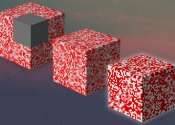Decreasing noise in acoustic underwater transmissions using deep neural networks
The accuracy and reliability of ocean communications and transmissions are affected by many sources of offshore distortion and background noise. Decreasing this interference in ocean transmissions is dependent on the process ...
May 31, 2023
0
42









